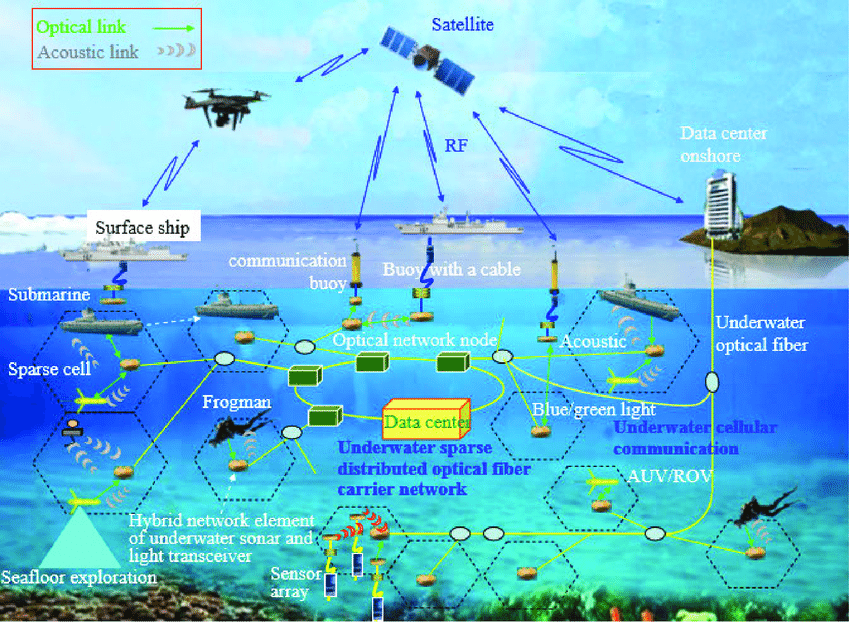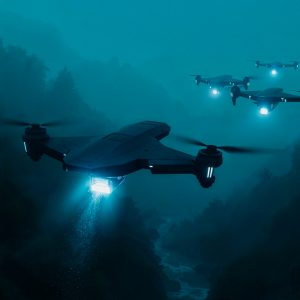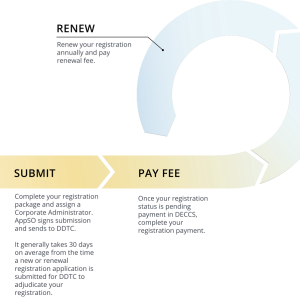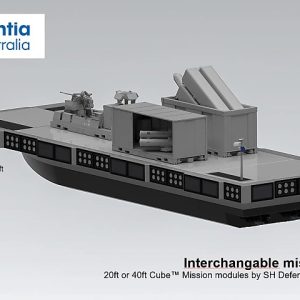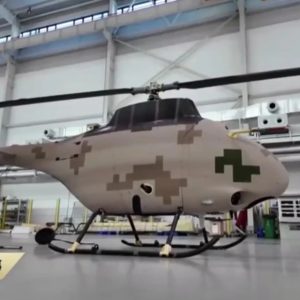Military interest in underwater free‑space optical communications is rising quietly, backed by recent RFIs that could reshape how unmanned underwater vehicles (UUVs) connect and coordinate. This matters because providing high‑bandwidth, low‑latency links underwater has long been a bottleneck—optical links promise orders‑of‑magnitude gains over acoustics, enabling tactical networked UUV swarms and real‑time targeting corridors.
Key Facts
NIWC Atlantic’s 2023 RFI sought man‑portable, tactical underwater free‑space optical communications (FSOC) transceivers capable of >100 m depth, at Technology Readiness Level (TRL) 7 or higher.
DIU’s 2025 call invited solutions for next‑generation undersea communications to support naval operations and autonomy, aligned with the AUKUS Maritime Innovation Challenge.
Research trend: Hybrid optical–acoustic–RF concepts—often using UAV/AUV relays—report step‑change throughput in simulations and lab tests, with early field experimentation expanding.
Defence media gap: Coverage remains sparse; most detail surfaces in procurement notices, lab notes, or specialized journals.
Why optical—and why now
Underwater communication has been dominated by acoustics—and for tiny data volumes, ultra‑low‑frequency electromagnetic links. Acoustic channels are robust at distance but suffer low data rates, long latency, and multipath distortion. For coordinated UUV swarms, acoustic bandwidth is the tyranny that caps autonomy, situational awareness, and distributed tasking.
By contrast, underwater free‑space optical communications can deliver very high data rates with far lower latency, ideal for bursty sensor fusion, imagery, and mission re‑tasking. The catch is physics: water absorbs and scatters light; turbidity, marine snow, and platform motion complicate pointing, acquisition, and tracking (PAT). Despite these hurdles, the potential operational payoff is large enough that navies are pushing from concept to trials.
What the latest solicitations actually signal
In 2023, Naval Information Warfare Center (NIWC) Atlantic issued a market‑research RFI seeking compact, tactical FSOC transceivers for depths beyond 100 meters. The bar was set high—TRL 7 or better and man‑portable—telegraphing interest in near‑term field demonstrations rather than blue‑sky research. Around the same time, NIWC ran a free‑space optics technology exercise on its Laser Communications Experimentation range, building test muscle for optical links in contested spectrum environments.
Fast‑forward to 2025: the Defense Innovation Unit (DIU), with AUKUS partners, called for solutions to advance undersea communications for naval operations. In plain English: DoD wants technologies that move beyond incremental acoustic upgrades and toward hybrid architectures where underwater free‑space optical communications handle the high‑bandwidth bursts.
Concept of operations: from point links to mesh
Today’s most realistic pathway is a hybrid stack. Optical handles short‑range, high‑throughput exchanges; acoustics provides the long‑range, lower‑rate backbone; RF or optical‑air relays bridge to surface and air nodes. In a mine‑countermeasures scenario, for example, UUVs could sweep lanes acoustically coordinated, then use optical bursts to dump high‑resolution imagery and classifier data to a nearby relay.
The mesh layer is the hard part. Optical links require tight PAT across moving platforms, with beam divergence, jitter, and current‑induced drift to tame. Adaptive beam‑steering, tight inertial navigation, and cooperative rendezvous behaviors will be essential. Expect early deployments to use quasi‑fixed “+data pits”—preplanned rendezvous points where UUVs pop into optical range to synchronize maps and orders.
Engineering challenges you can’t hand‑wave
Medium attenuation and channel stability
Even in clear ocean water, attenuation limits practical range to tens or a few hundred meters. Littorals with suspended particulates narrow that window. Designers must model local optical properties and tune wavelength (often blue‑green) to squeeze the best signal‑to‑noise ratio.
Pointing, acquisition, and tracking (PAT)
PAT is the heart of reliable underwater free‑space optical communications. Solutions blend wide‑FOV acquisition sensors, narrow‑beam communications lasers, and fast beam‑steering. Motion compensation must account for UUV body dynamics and ambient flow.
Power, packaging, and thermal limits
UUVs live on strict size‑weight‑power budgets. Optical emitters, detectors, and control electronics must fit without gutting endurance. Thermal design matters: dumping heat quietly in a cold, conductive fluid is easy—until you create telltale wakes or compromise component reliability.
Network protocols and interoperability
High‑bandwidth bursts force new MAC/routing strategies: store‑carry‑forward behaviors, opportunistic relays, and quality‑of‑service tiers to avoid clogging acoustic fallbacks. Security must ride along—key exchange, crypto agility, and LPI/LPD (low probability of intercept/detection) techniques tailored to optical signatures.
What’s real versus hype
Laboratory and tank experiments show order‑of‑magnitude throughput gains, and relay concepts using UAVs or surface buoys can stitch underwater optical hops to air/space networks. But large‑scale sea trials are still limited, and logistics are nontrivial. The NIWC and DIU activity suggests the transition from papers to prototypes is underway, yet programmatic patience will be necessary.
In practice, we’ll likely see optical‑burst add‑ons grafted onto existing UUV fleets first—payload modules that wake up for short exchanges at pre‑agreed distances—before navies commit to fully optical‑aware autonomy stacks. Think “Bluetooth for the deep,” but with military‑grade PAT and crypto.
Procurement and industry implications
The 2023 NIWC RFI was classic market reconnaissance: map available products, characterize risk, and shortlist for demos. The 2025 DIU call—nested in the AUKUS Maritime Innovation Challenge—expands the aperture to allied firms and dual‑use players. That’s a signal to photonics houses, blue‑green laser specialists, detector manufacturers, and UUV primes: assemble teams now. Partnerships that combine ruggedized optics, navigation, and autonomy middleware will be best placed when prototype solicitations drop.
Downstream, expect test events in clear‑water ranges and fleet exercises where optical link kits ride along on mine warfare and ISR UUVs. Standards work will matter: navies will want interoperable encryption, data models, and mission‑planning tools that de‑risk coalition operations.
Risks, limits, and alternatives
Range and environment are the perennial constraints. Turbidity spikes, biofouling, and plankton blooms will cause performance cliffs. Hybrid architectures mitigate this, but complexity creeps in. There are competitors, too: improved acoustic modems with adaptive modulation, magnetic induction for very short ranges, and old‑school solutions like fiber tethers or seabed nodes for fixed infrastructure.
Still, the operational value of rapid, covert, point‑to‑point exchanges is strong. If teams can tame PAT and package power‑efficient transceivers, underwater free‑space optical communications will become the preferred “burst pipe” inside contested littorals.
What to watch next
Prototype down‑selects and FY 2026–2027 demonstrations are the near‑term milestones. Watch for allied solicitations in waters with good clarity—Mediterranean basins, Red Sea pockets, and parts of the Pacific. Also track naval mine warfare modernization plans, where optical meshes naturally complement UUV‑heavy concepts of operations.
Editor’s note: This analysis uses only verified solicitations and academic sources. Where claims remain tentative, they are framed as working theory, not established fact.
Internal Link
Read our related analysis on maritime mesh‑networked communications and our feature on modular mine countermeasures.
External Sources
[1] NIWC Atlantic RFI: Tactical Underwater FSOC (Mar 2023)
[2] DIU: Advance Underwater Communication call (Mar 2025)
[3] AUKUS Maritime Innovation Challenge 2025
[4] NIWC Atlantic ANTX: Free‑Space Optics Range (Nov 2022)
[5] Academic: UAV‑assisted RF‑UOWC performance (2024)
Further Reading
- DA — Maritime mesh networking explainer (internal)
- DA — Modular mine countermeasures concepts (internal)
- NATO & allied undersea autonomy roadmaps (external)
- NIWC Atlantic RFI (FSOC), Mar 2023 — fbodaily.com
- DIU: Advance Underwater Communication, Mar 31, 2025 — diu.mil
- AUKUS Maritime Innovation Challenge 2025 — asca.gov.au
- NIWC Atlantic ANTX FSO range note — dvidshub.net
- UAV‑assisted RF‑UOWC systems — arXiv

